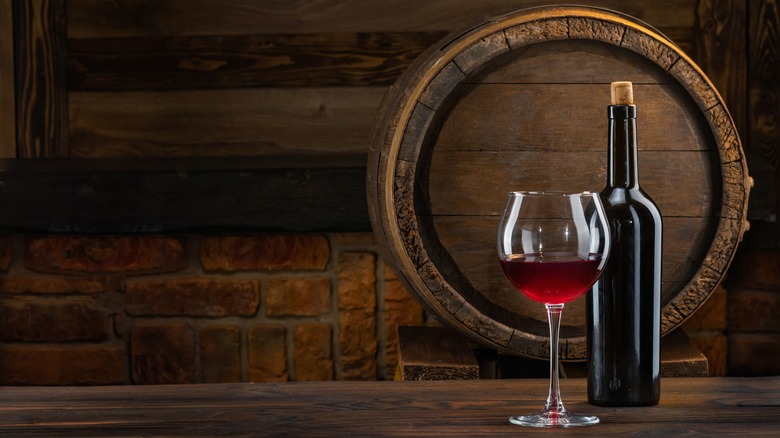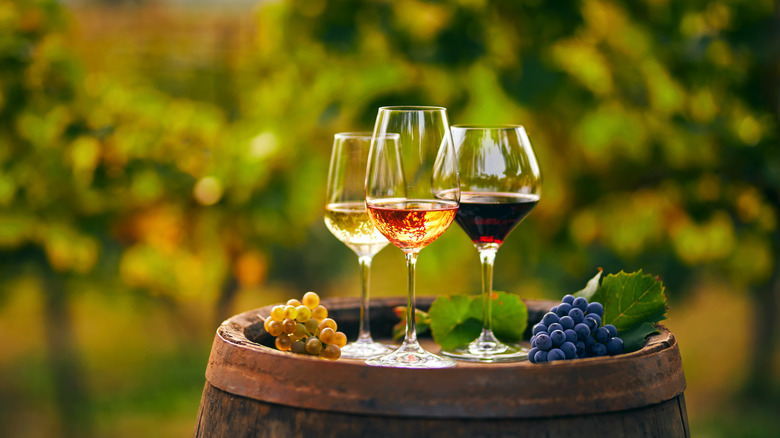Why Acidification Is Sometimes Necessary When Making Wine
Wine for beginners can be quite confusing. Even for the most experienced wine connoisseur, the complexities of wine-making are overwhelming. There are sweet wines, dry wines, and blends, as well as sparkling wines and different ages of wine. To make things more confusing, each one has its own level of acidity, which lends to the taste and visual experience (via Wine Enthusiast).
More than likely, you probably drink your favorite wine without thinking about how much acid is in it. Not only do we often not think about what's in our food and drinks, but acidification in wine isn't talked about much at all. The reason for that is that when acidification is used in the production of wine, it's likely because the grapes weren't top-notch to begin with. Still, acidification is sometimes necessary, and it does improve the final product. Here's what you need to know about the process.
Why acidification?
According to Wine Folly, acidification is the practice of adding tartaric or malic acid to a wine. These acids are both present in wine naturally but are added in powder form during acidification (via Wine Spectator). Sometimes it's needed because a wine's acid level is too low, which in turn creates a high pH level, and that causes unpleasant flavors in a wine and also speeds up its deterioration. Low acid levels often stem from the grapes being overly ripened. This is more common in places with hot climates — think California, Argentina, and Italy — and leads to very sweet grapes.
You probably won't know if acid has been added to your wine for stabilization and improved flavor because the truth about wine is that there are currently no label requirements. However, you might know if there are no additives since wine companies prefer to make it clear when they have an all-natural wine. Wine Folly notes that if an inexpensive wine, one that is $20 or less, has additives, it isn't as big of a deal as a $100 bottle with additives. If a vineyard is claiming to have a high enough quality wine to charge that amount per bottle, it shouldn't need acidification to improve upon it.

